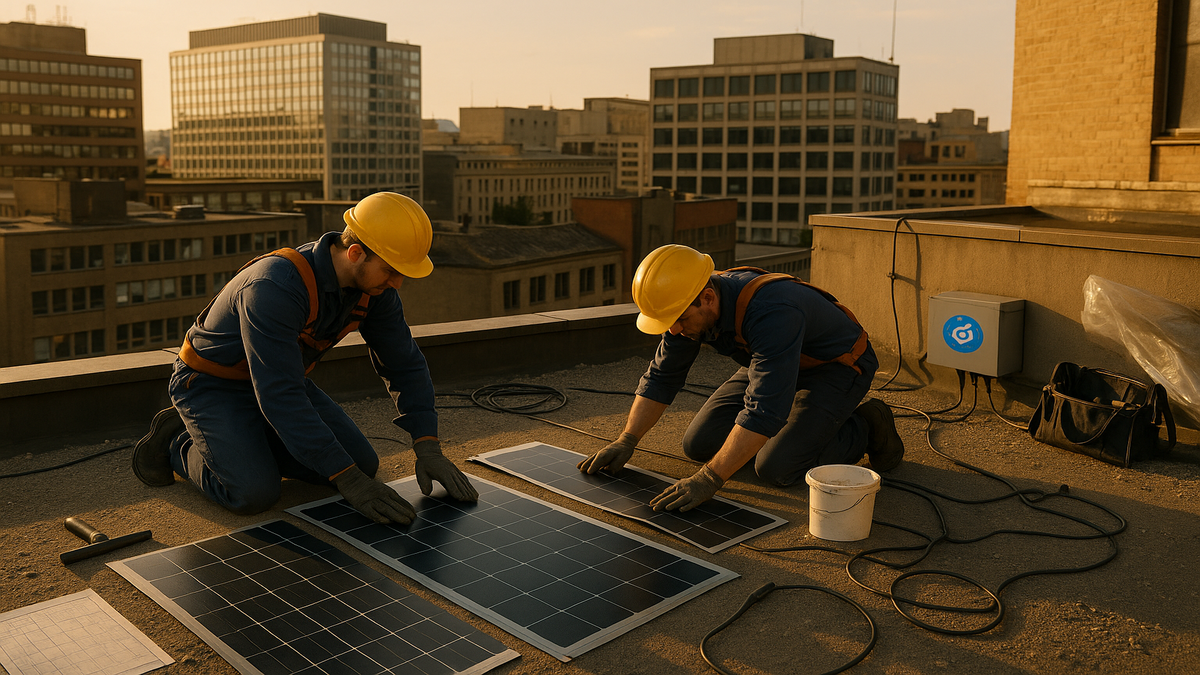Few predicted that rooftops would be at the core of Europe’s energy transformation. But with fresh investment and a sharp focus, Heliup is redefining how buildings contribute to the urban energy equation.
Correcting the narrative: not urban mobility, but urban energy
When I first saw the headline—”Heliup raises €10M to disrupt urban mobility”—I expected electric scooters, smart transport hubs, maybe even drone taxis. But after digging deeper, I realized something else was happening. Heliup isn’t in the mobility game. It’s in the rooftops. More precisely, it’s in turning underused urban spaces—the tops of warehouses, offices, public buildings—into solar power stations. The disruption is real. Just not where it was expected.
The €10 million funding round, confirmed late last year, is aimed squarely at scaling up the production of lightweight photovoltaic panels. The lead investor, Starquest Capital, was joined by BNP Paribas Développement, IDEC Group, and government-backers like Bpifrance and the France 2030 plan, making this a significant public-private endorsement of decentralized solar production.
Scaling lightweight solar solutions
Unlike traditional solar panels, Heliup’s modules are ultralight. That makes them viable for older or fragile rooftops that can’t bear heavy installations. Their flagship product, Stykon, uses silicon-based tech and adheres directly to flat roofs using specialized adhesives—avoiding the need for ballast or mechanical fixes. A second line, Lighton, is in development for inclined surfaces with an expected rollout in 2025.
The new production facility in France is designed to output 100 MWc per year, corresponding to 500,000 square meters of installed solar panels. This local manufacturing push is in line with European Commission recommendations on energy sovereignty (European Green Deal) and the reduction of supply chain dependencies on non-EU regions.
Environmental impact: measurable and material
The environmental case is strong. By using 90% less glass and aluminum than ground-based solar farms, Heliup claims its solution will avoid over 500,000 tons of CO₂ emissions. Materials used are optimized to reduce embodied carbon while ensuring durability. Compared to traditional solutions, this light-footprint approach is appealing for companies facing rising ESG requirements across Europe.
| Metric | Heliup Panels | Traditional Solar |
|---|---|---|
| Materials used (per MW) | Minimal glass, no ballast | Heavy glass, aluminum frames |
| Suitable rooftops | Flat, fragile, industrial | Flat with structural reinforcements |
| Fixation method | Adhesive | Mechanical or weighted |
| CO₂ reduction (estimated) | >500,000 tons | Varies |
Who benefits—and who doesn’t?
By positioning itself around commercial and industrial buildings that were previously excluded from solar retrofitting, Heliup fills a niche. Think logistics centers, retail chains, and public sector infrastructure. But this isn’t a solution for homeowners or off-grid enthusiasts. The economies of scale depend on large flat surfaces and proximity to high-consumption zones.
“We’re not aiming to replace ground-based solar farms,” says Delphine Maarek, co-founder of Heliup. “We’re enabling thousands of buildings—currently unused for energy—to produce solar power where it’s needed most: close to urban demand.”
The role of public funding
Part of what makes Heliup’s progress noteworthy is institutional backing. The support from France 2030 and Bpifrance links this startup to broader policy goals—from energy independence to job creation in the clean tech sector. Just like EIT InnoEnergy, one of its investors, Heliup aligns with European efforts to reindustrialize innovation at home.
This has sparked interest from cities that, while not directly investing in mobility as the headline suggested, are rethinking their energy grids. Distributed rooftop solar, when aggregated, can relieve pressure on overburdened urban transformers. That’s a form of disruption in itself—and one that might change how urban growth interfaces with grid infrastructure.
What’s next for Heliup?
In the short term, expansion in Europe is the focus. Germany, Spain, and Italy present attractive markets, both for regulatory support of clean energy and the abundance of commercial rooftops. Long term, Heliup will likely approach North America and parts of Asia through co-manufacturing or licensing—the business model is modular by design.
That said, competition is growing. Lightweight solar isn’t an entirely new concept, and large players like SunPower and Hanwha Q Cells already eye similar verticals. Heliup’s differentiation lies in its pricing, mounting technology, and low transportation footprint.
FAQ
How will Heliup’s lightweight solar panels impact urban energy consumption?
By enabling large buildings to self-produce electricity, demand on the municipal grid can be reduced, especially during peak hours. This strengthens local resilience and lowers transmission losses.
What are the main challenges Heliup faces in implementing its solar solutions?
Regulations related to rooftop safety, local permitting variations, and procurement bottlenecks for specialized materials remain significant hurdles.
How does Heliup’s technology compare to traditional solar panels?
While the energy efficiency is comparable, the main advantages are weight, ease of installation, and adaptability to rooftops unsuited for standard systems.
What are the environmental benefits of using Heliup’s solar panels?
Fewer raw materials, minimal land use, and localized production help lower CO₂ output and resource extraction. The use of adhesives also reduces mechanical stress and material fatigue.
How does Heliup plan to expand its market beyond Europe?
Through strategic partnerships, licensing, and co-development agreements, especially in markets with large industrial real estate and decarbonization incentives.



